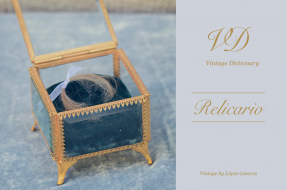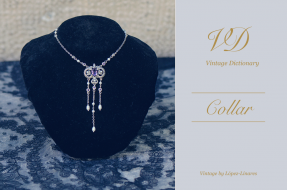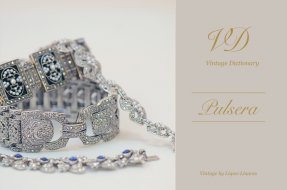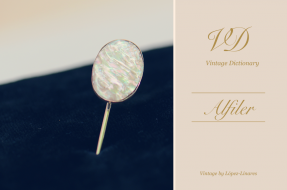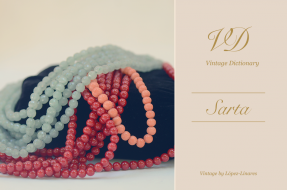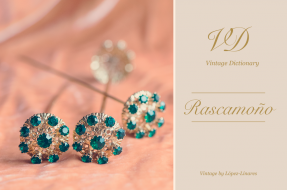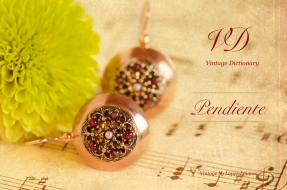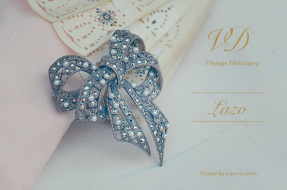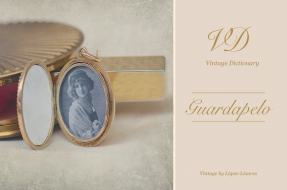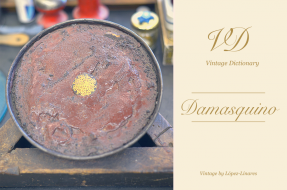My Vintage Dictionary
With “R” for “Reliquary”
A reliquary is a small box or recipient commonly used in the past to wear hanging from the neck. The very first use was entirely religious as a case to (...)
With “C” for “Collar” (Necklace)
With “C” for “Collar” (Necklace) The Spanish word for “necklace”, collar, comes from the latin term “collum”, which means “neck” in (...)
With “P” for “Pulsera” (Bracelet)
A bracelet is an jewel used as an accessory to decorate your wrist. It’s commonly made of links in different forms and sizes that give the piece flexibility (...)
With “A” for “Alfiler” (Tie Pin)
A tie pin is an accessory commonly used by men that had a hit back in the 20s. This tiny piece clips the tie to the shirt so it can’t move. Sometimes, (...)
With “S” for “String”
In jewelry this term “string” is used to define a row of beads linked by a thread. We can differenciate strings with pearls, corals, gold or any other (...)
With R for Rascamoño (Ornamental Hairclasp)
Let me put this image in your head: long needles usually decorated in one of the two ends with stones in different colors. Women used them both to hold (...)
With P for “Pendientes” (Earrings)
Also known as pendants, hoops or studs. It’s an ornament used both by men and women since the old times in order to decorate the earlobe. There are plenty (...)
With “L” for “Lazo” (Bow)
Let’s understand “bow” here as a long fabric band that allows us to tie a piece in a decorative and creative way. A bowknot is a knot made with laces (...)
With “G” for “guardapelo” (locket)
The name comes from the traditional use of this jewel: small pendant with a tiny box in it where you can keep a lock, a little photography or a miniature. (...)
D” for “Damascene”- Crafwork from Toledo
Toledo is a Spanish city known by the famous damascene craftwork. Paying a visit to Toledo will show you places where still today you’ll find the most (...)
